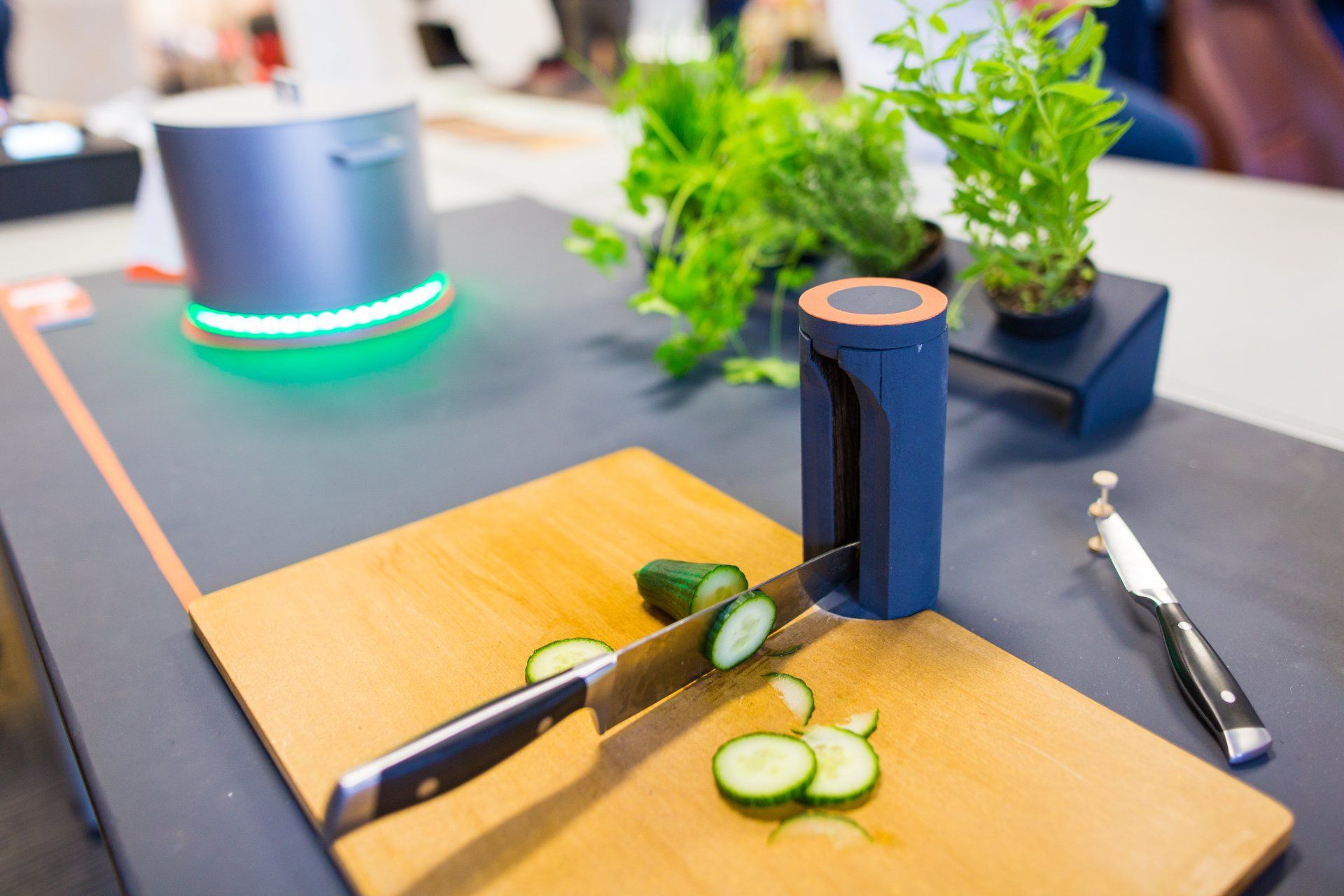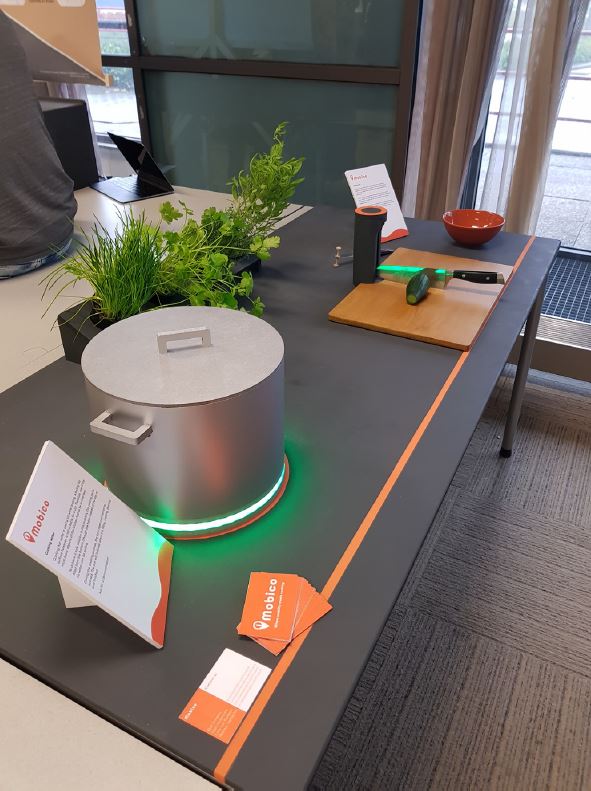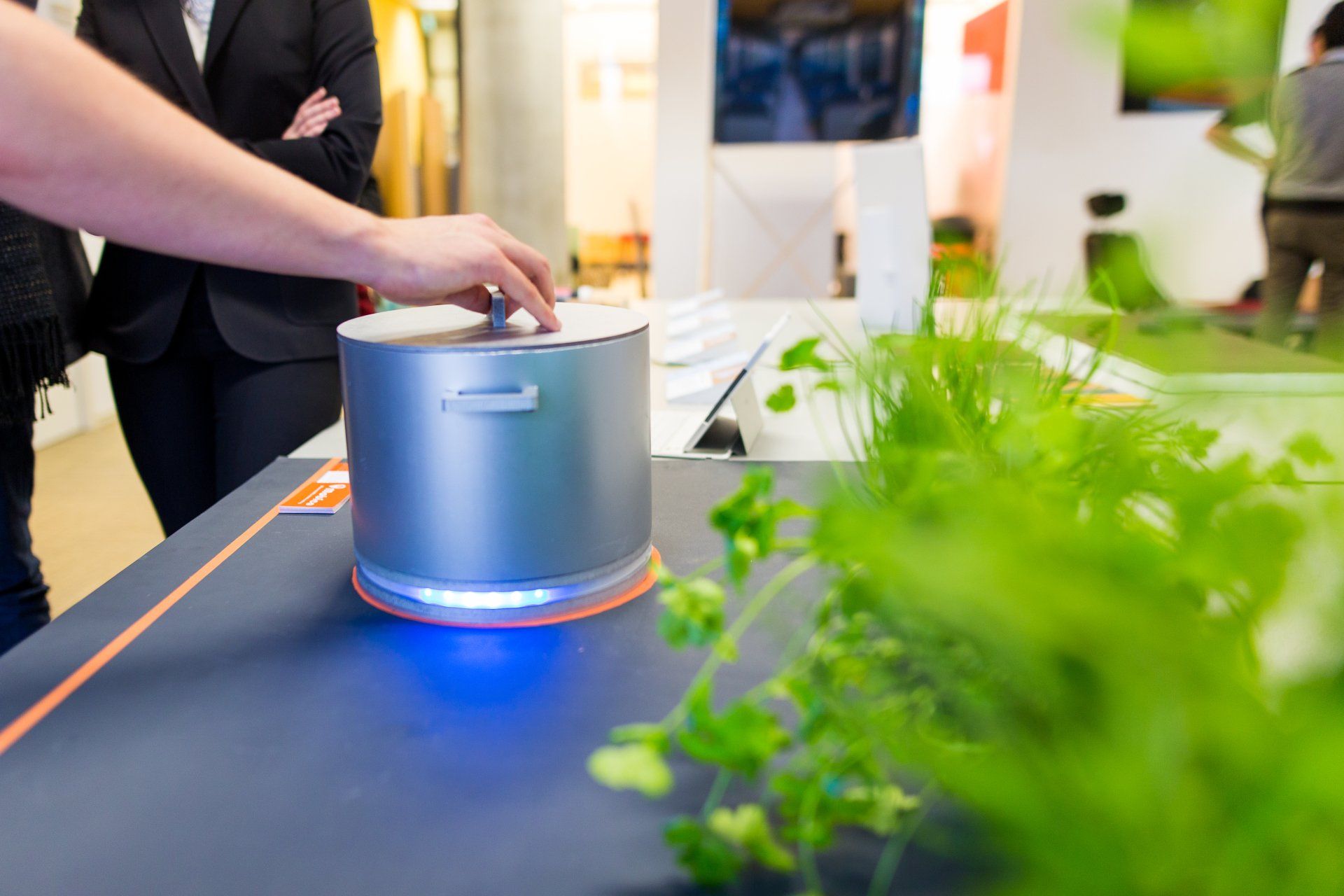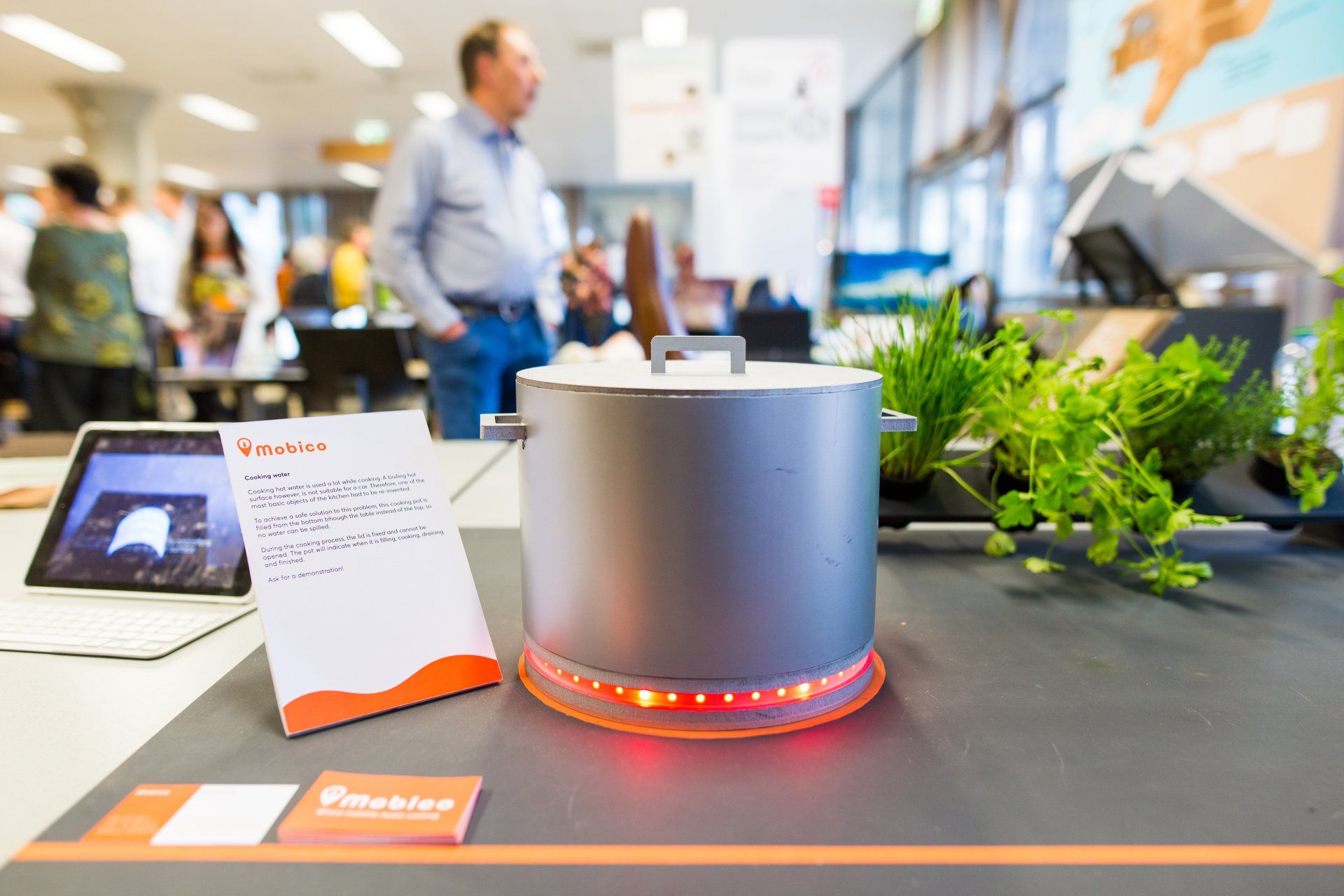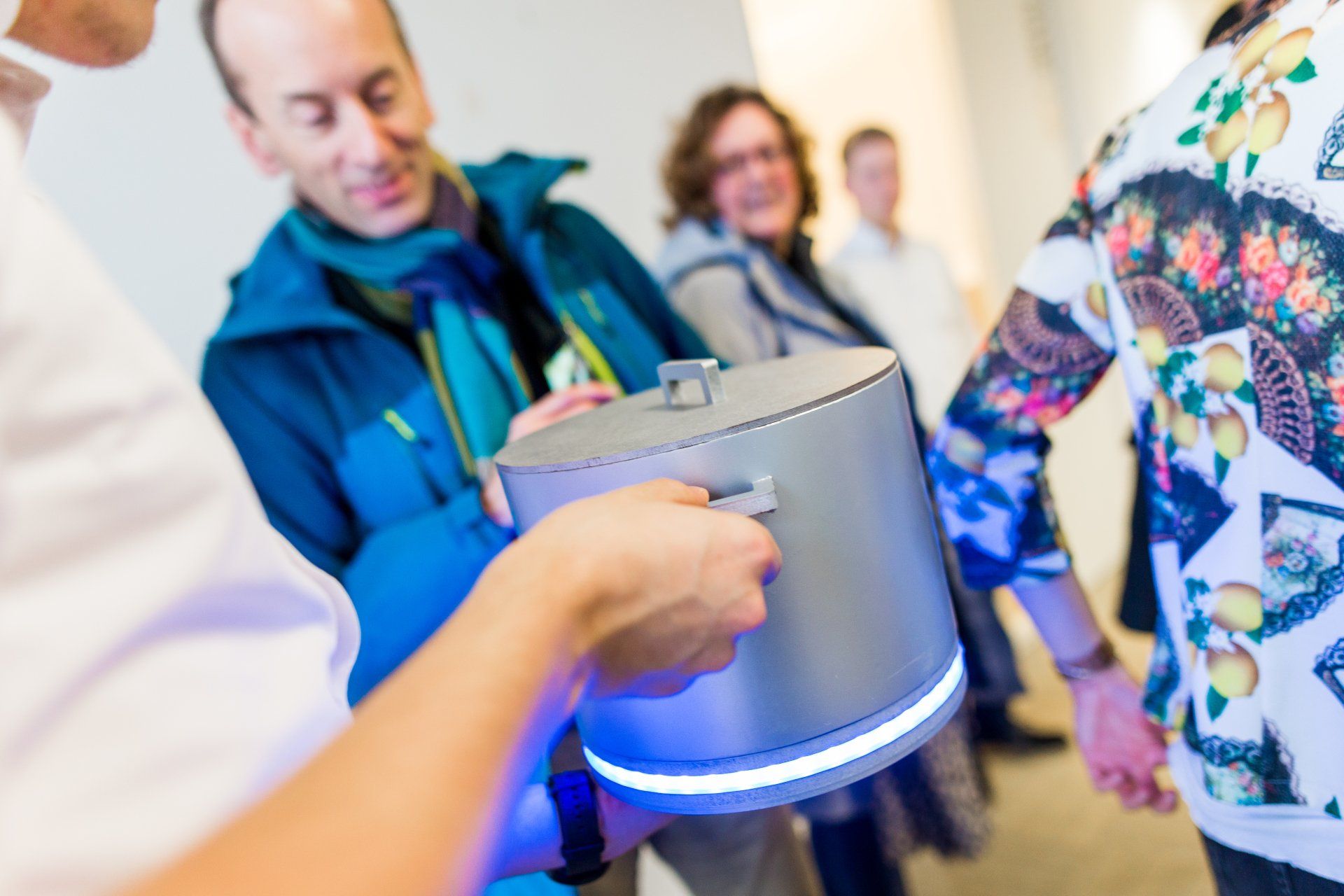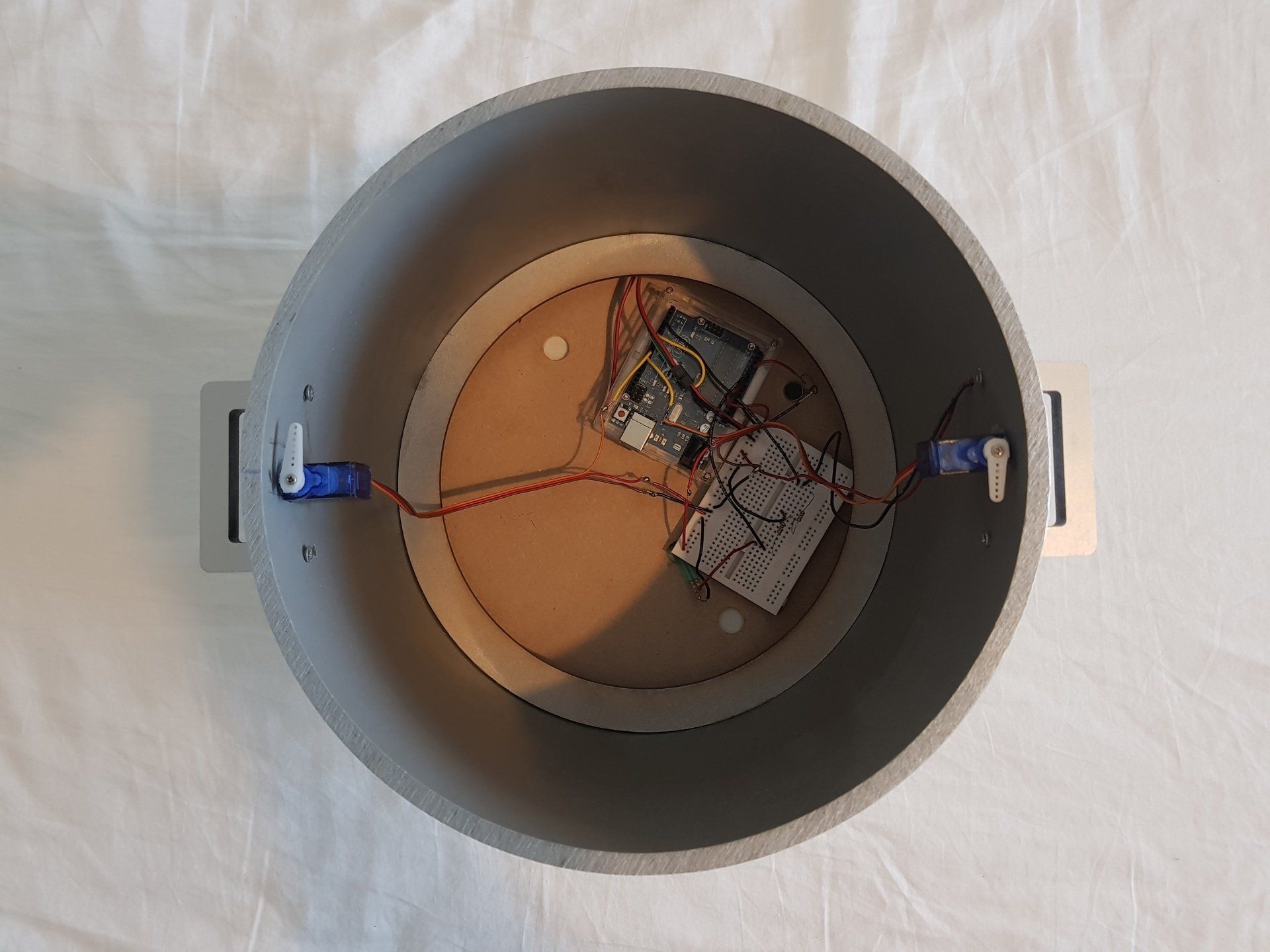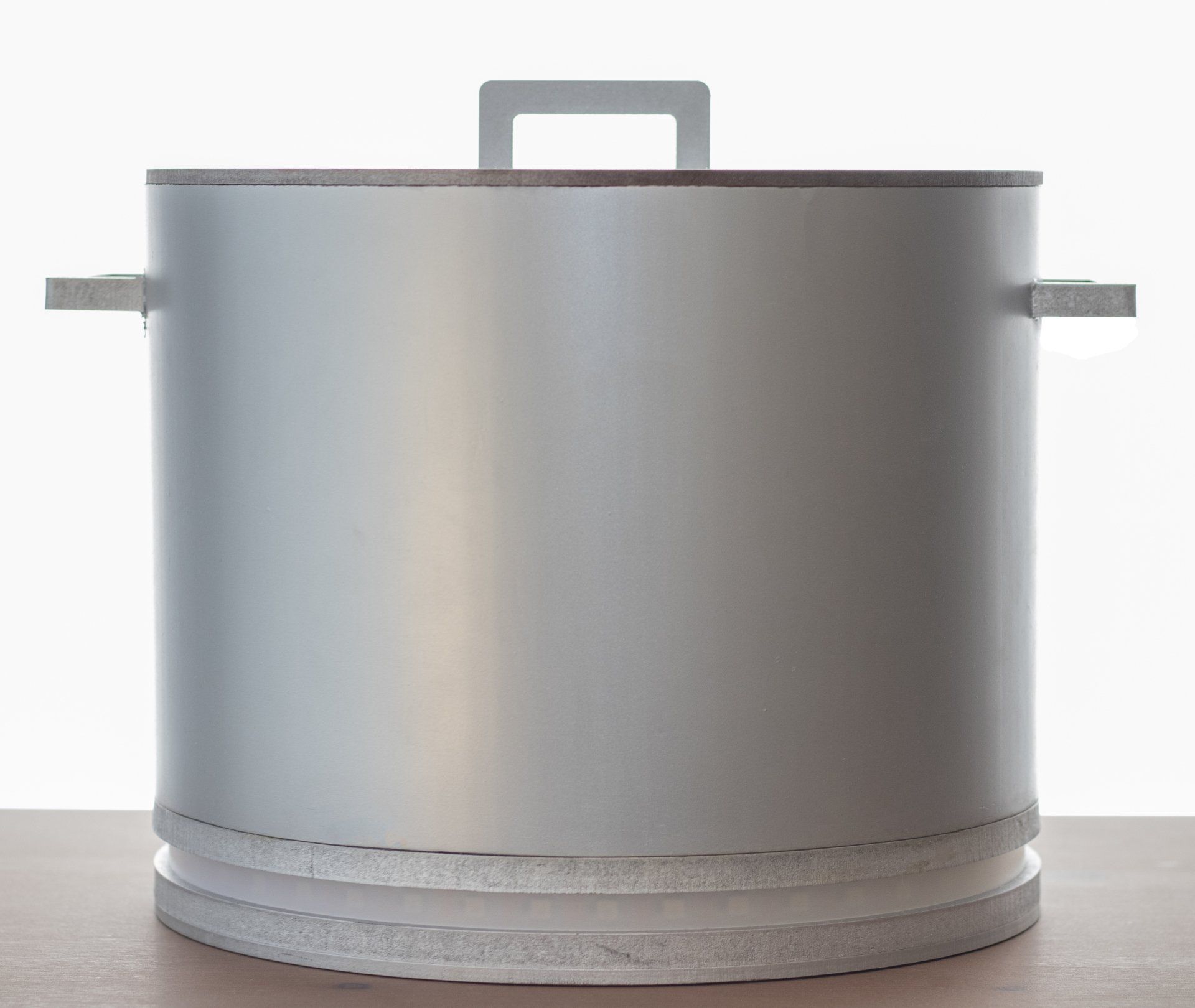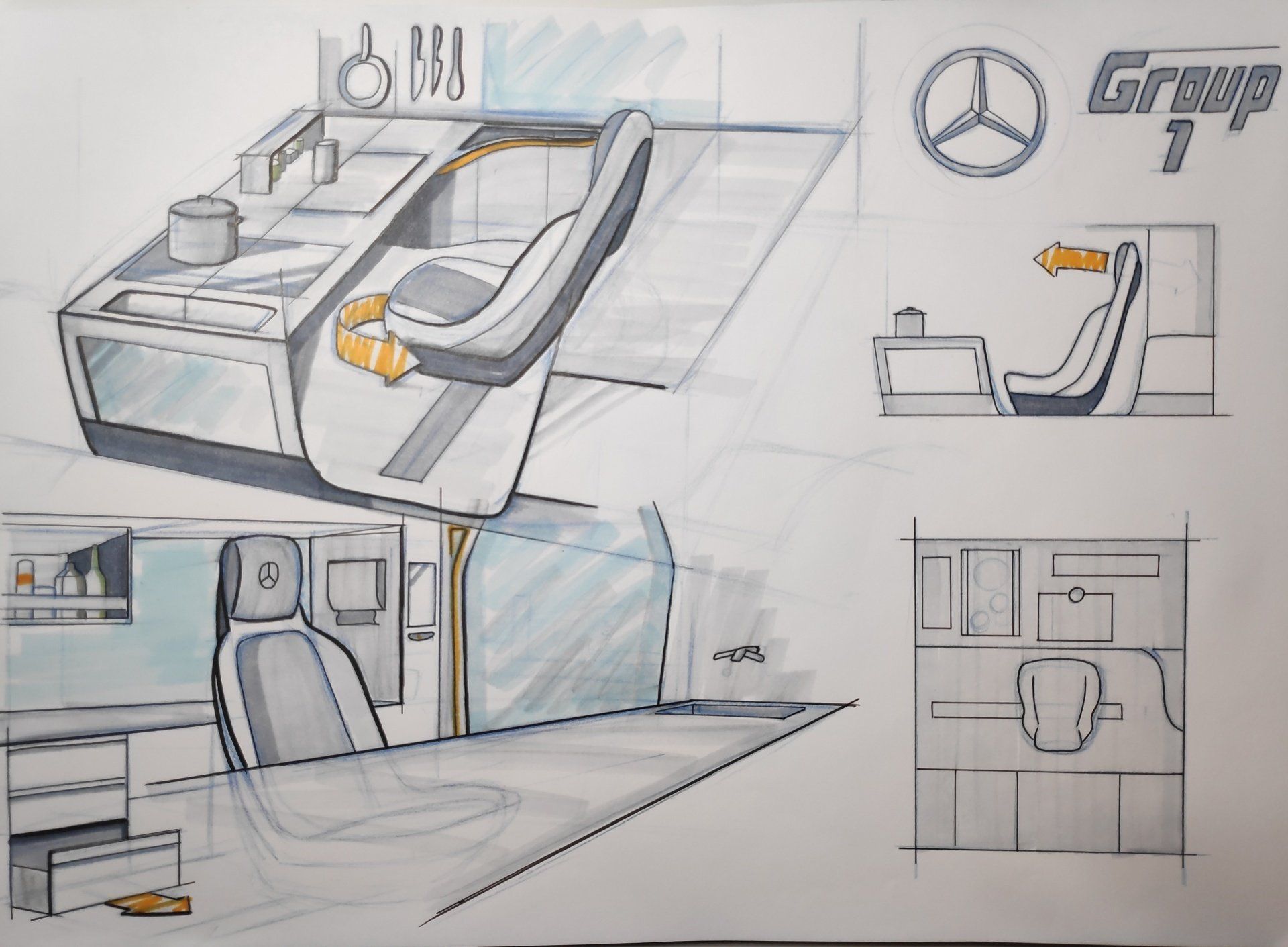MobiCo
Design Project B2.1 - MobiCo
Creativity and Aesthetics, Technology and Realization, User and Society, Professional skills
During my B2.1 project in the Smart Mobility squad, my group and I were challenged by Daimler AG to design the interior of a full level 5 autonomous car. Since there are no driving controls required, the interior of such a car can be used for other, unexplored activities. What could the interior fur such an activity look like?
Results
After exploring and abandoning many ideas, the goal of building a kitchen inside a car was established, mainly due to the positive client feedback on this idea. As this was never done before, the main challenge in this project was completely rethinking normal kitchen appliances, because the sudden movements of the car should be taken into account to prevent dangerous situations.
To narrow down the scope, the project focused on cooking water or other liquids in a pan, and cutting food with a knife. Going through an iterative process, the pan was designed as such, that it would lock on the heating source, preventing it to move around. Once ingredients are added, the lid of the pan locks into place where after water is added and later drained from the bottom. This allows for cooking without the danger of burning oneself. To indicate what the pan was doing, an LED-ring and haptic feedback in the handles were added.
To safely cut food with a knife, a mechanism was designed to spatially constrain its movements. This constrained was fixed to the cutting board on the ‘table’, allowing for a normal chopping movement as well as a rotational movement around the vertical axis of the rotation point.
Learnings
Since the visions of the different group members for the autonomous interior were very far apart, the process was not very smooth, focusing on constraints and quickly abandoning ideas when a bit of criticism was given. Throughout the second half of this project, I learned to have confidence in my ideas, think in possibilities and embrace criticism as a challenge. Supporting me in this learning, was the realization that design is not always about creating a final product. It can also be used as an exploration and inspiration for the future, which allows to step a bit further outside the box. Coping with the different perspectives in the group helped me improve my professional skills.
Being driven by an anticipated, unexplored societal change, the creative exploration of this project heavily depended on our imaginative capacity and anticipation skills. This process therefore taught me to work with a continuous lack of information, designing our product around the uncertainties of the unknown. By reaching out to experts in the field of kitchens, I improved my skills in interviewing and analyzing feedback, using the gained knowledge to guide my design direction.
By being heavily invested in the realization of the pan, I improved my physical making skills by both using the manual tools in the Vertigo workshop, and learning to use laser cutting techniques. By working with exact and realistic dimensions, and choosing the right materials and finish, I learned how to better emulate the material qualities of the envisioned design. I also improved my electronics and coding skills by working with new sensors and actuators to create light- and haptic feedback.

